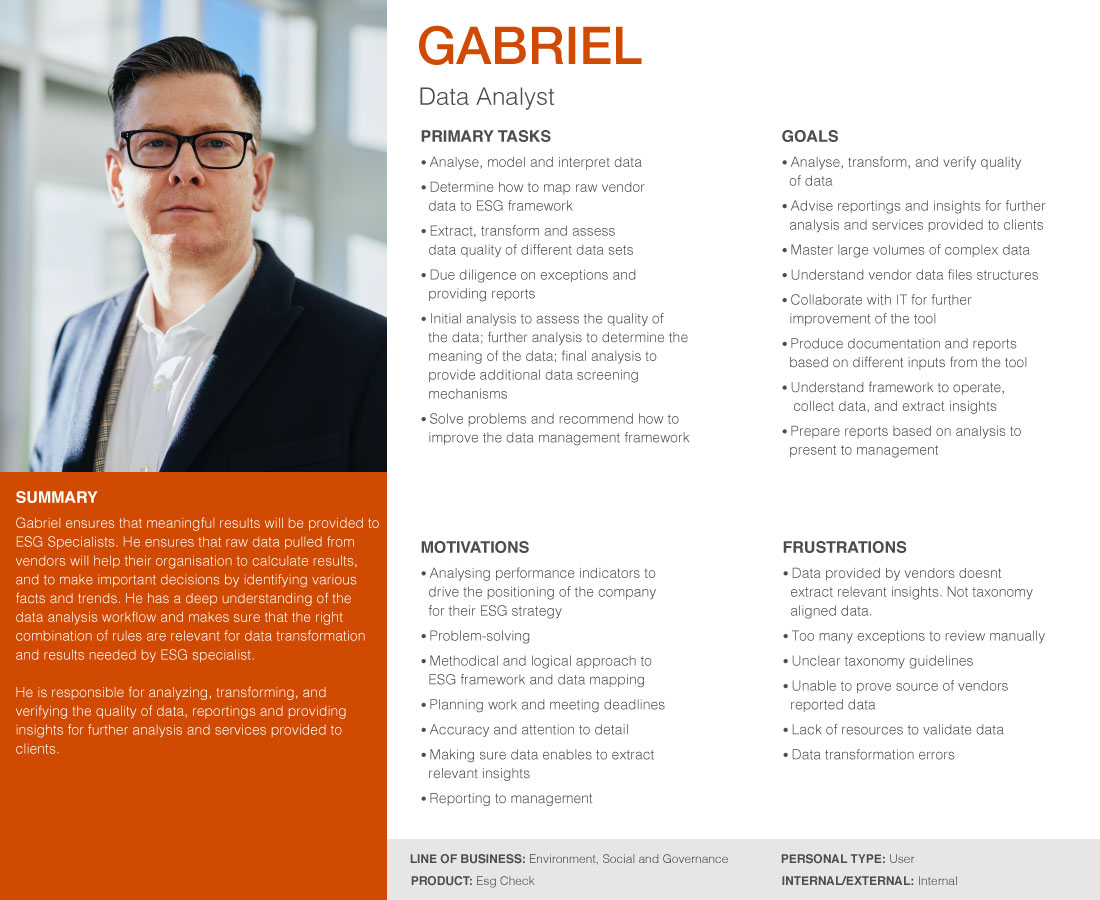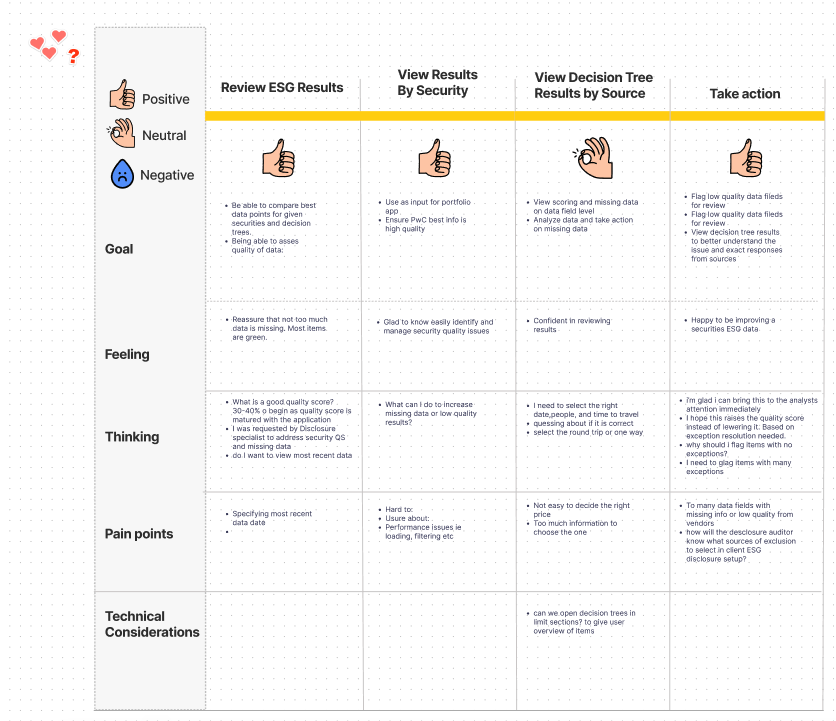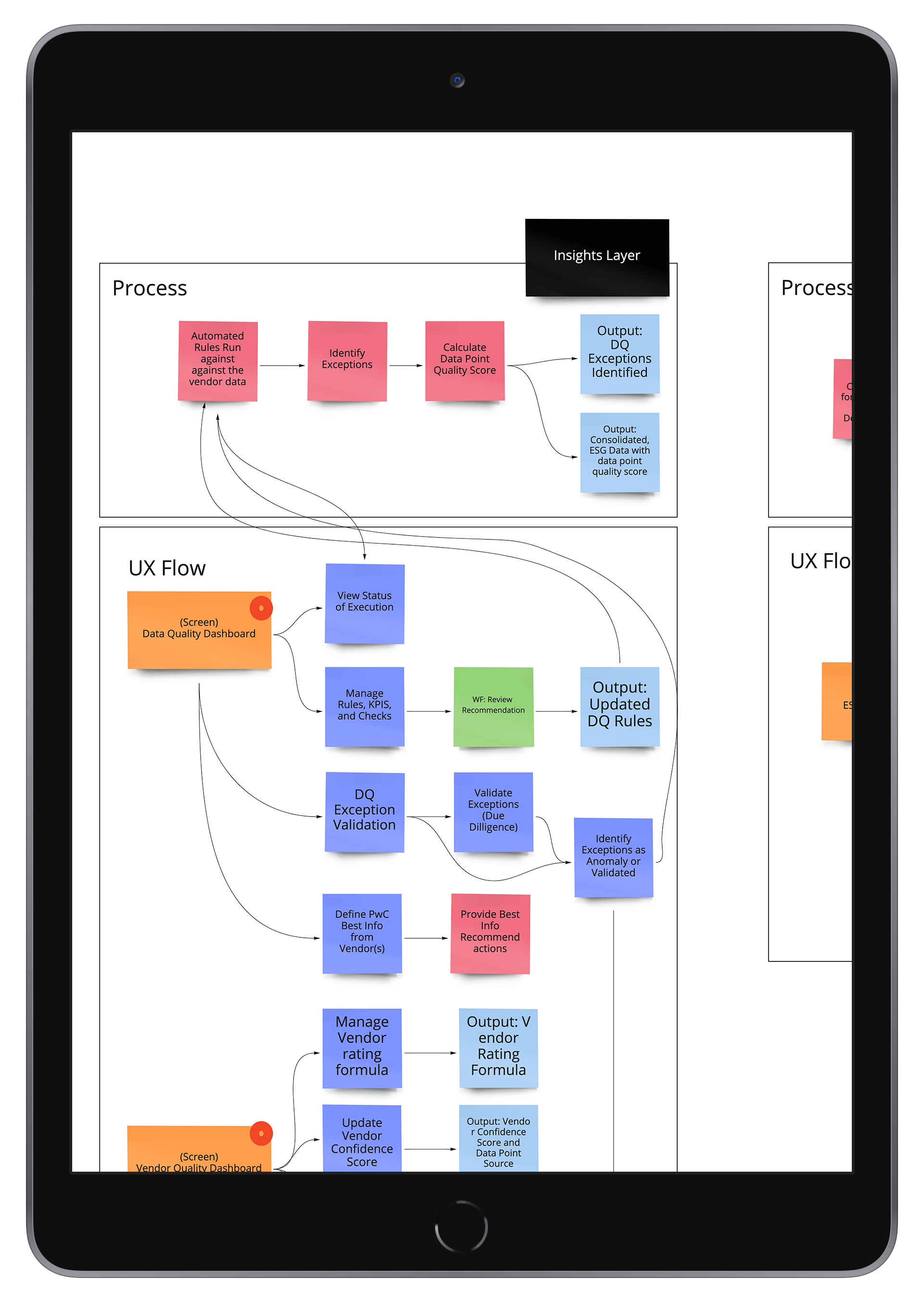Product Discovery & Service Design Approach
ESG analysts faced challenges in evaluating Environmental, Social, and Governance (ESG) factors due to fragmented data sources and complex compliance requirements. The goal was to design a centralized ESG auditing tool that simplifies analysis, standardizes data ingestion across vendors, and supports accurate, regulation-aligned reporting. We applied a user-centered design approach—mapping analyst workflows, clarifying data lineage, and introducing filtering, confidence indicators, and in-context guidance—to deliver a streamlined, trusted experience that supports confident ESG evaluations.
1
Discovery & Research
- Conducted interviews and whiteboard workshops with ESG experts and compliance leads to understand complex workflows and pain points.
- Performed competitive analysis to identify gaps in existing ESG tools.
- Developed personas and journey maps to capture user needs and behaviors.
- Mapped the analyst’s end-to-end ESG review process, surfacing friction in data ingestion, scoring transparency, and report generation
- Crafted journey maps highlighting frustration with vendor inconsistency and low visibility into ESG scoring logic2
Ideation & Strategy
- Facilitated design workshops to brainstorm solutions addressing identified challenges.
- Prioritized features based on user impact and technical feasibility.
- Outlined a phased roadmap for feature implementation.3
Design Strategy & System Thinking
- Introduced filtering and confidence indicators to clarify data provenance.
- Simplified complex ESG metrics through guided steps, progressive disclosure, and glossary overlays.
- Designed reusable components and documented them in Storybook to align with broader design system initiatives.
- Ensured platform scalability to support multiple regulatory regions and audit types.4
Design & Prototyping
- Created wireframes and interactive prototypes to visualize user flows.
- Developed a scalable design system documented in Storybook and Sketch for consistency. Later migrated to Figma.
- Conducted usability testing to refine interface and interactions.5
Implementation & Collaboration
- Worked closely with developers to ensure accurate translation of designs into the product.
- Provided design specifications and assets to streamline development.
- Iterated on designs based on user feedback and testing results.6
Testing & Iteration
- Ran moderated usability testing with ESG analysts to validate prototype flows.
- Iterated designs based on feedback around terminology, report clarity, and filter usability.
- Partnered with engineering to QA front-end delivery and ensure accessibility compliance.7
Results & Impact
- Cut data validation time by 40%.
- Increased analyst confidence in ESG scores via clearer data lineage and controls.
- Streamlined reporting aligned with SEC, EU taxonomy, and internal compliance reviews.
- Established a scalable design system foundation for future ESG tools in Figma, establishing it is the new preferred company standard.




